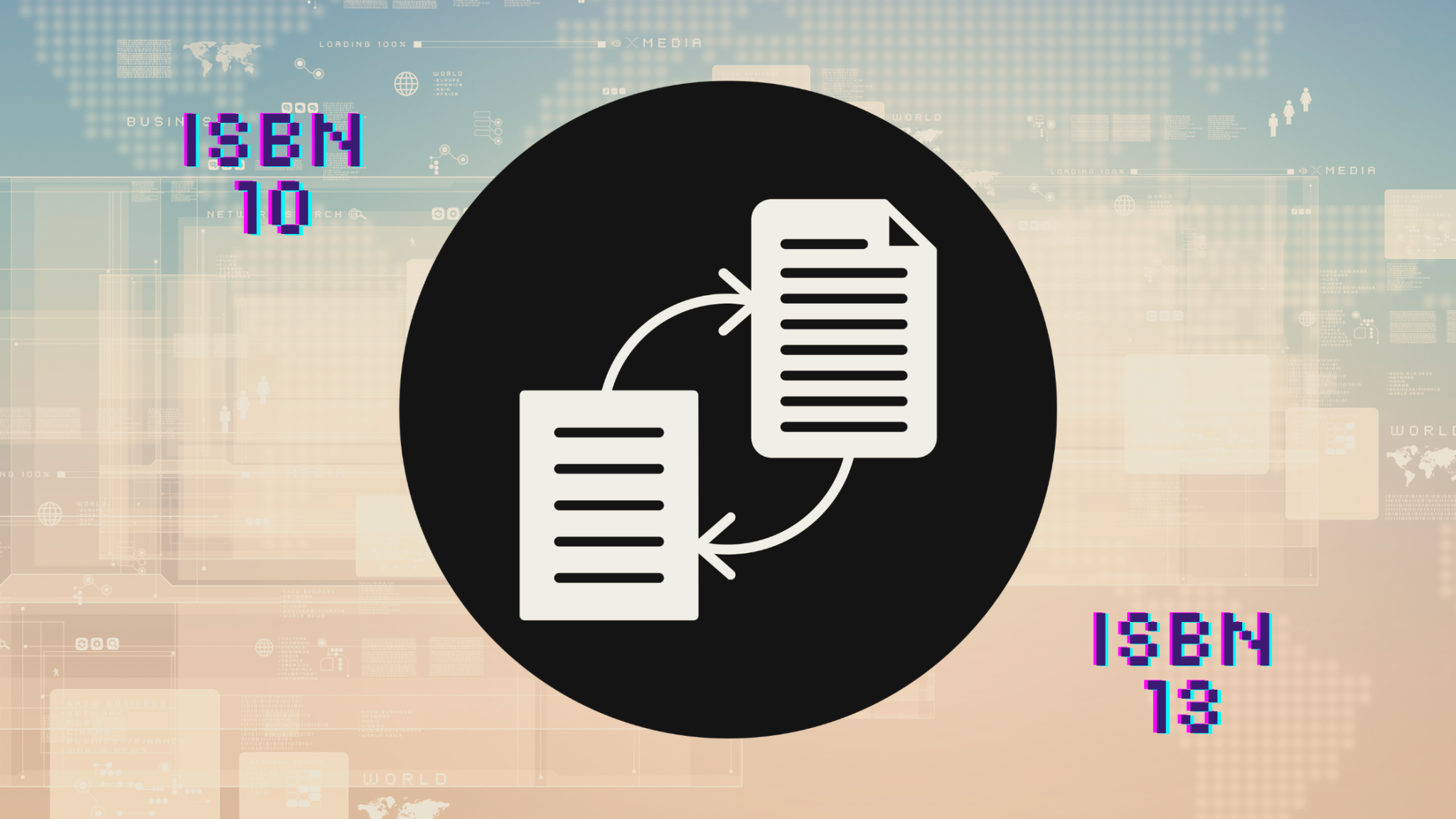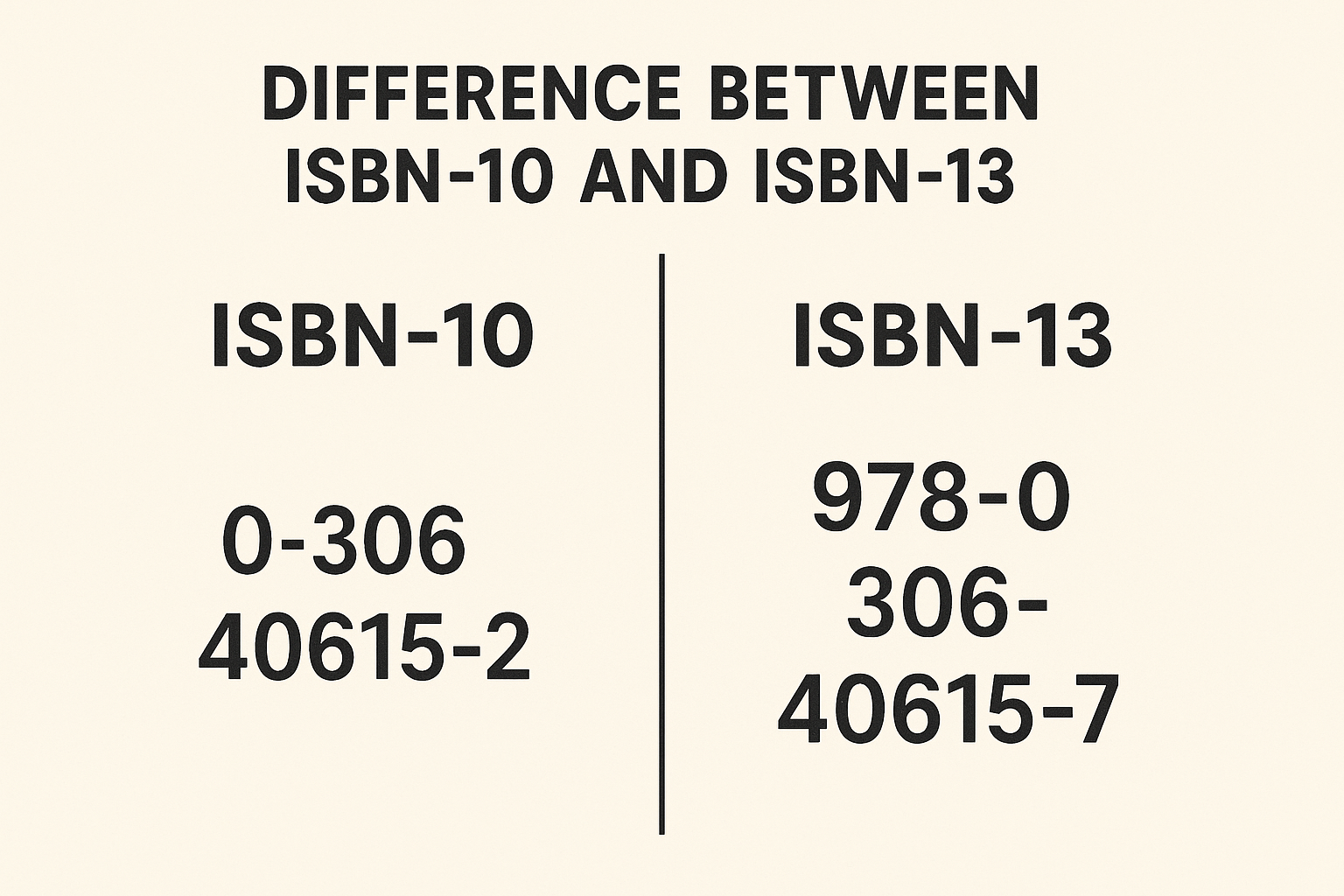
In the publishing industry, the ISBN, or International Standard Book Number, is a critical identifier used to catalog and sell books around the world. As publishing standards have evolved, so too has the ISBN format. Today, you’ll encounter both the older ISBN-10 and the newer ISBN-13 formats. Understanding how to convert between these two is essential for authors, publishers, librarians, and distributors.
This in-depth guide walks you through the differences between ISBN-10 and ISBN-13, why conversion matters, and exactly how to convert in both directions.

The ISBN-10 format was introduced in 1970 and consists of 10 digits. It was the standard for over three decades and is still commonly used in older publications and library systems. The structure typically looks like this: 1-234-56789-X, where the final digit is a check digit used to validate the number. This check digit can be a number from 0 to 9 or the letter “X”, which represents the value 10.
ISBN-13, on the other hand, was adopted globally in 2007 to comply with the international EAN (European Article Numbering) system used in ISBN barcodes. This 13-digit format begins with a prefix, usually 978 or 979, followed by the same components as the ISBN-10 (group identifier, publisher code, item number), and ends with a new check digit calculated differently from the ISBN-10. For example, an ISBN-13 might look like: 978-1-234-56789-0.
Converting between ISBN-10 and ISBN-13 is important for several practical reasons. First, most major online retailers, including Amazon, Barnes & Noble, and Bookshop, require ISBN-13 for listing and inventory purposes. If your book only has an ISBN-10, it may not be accepted or properly cataloged in modern systems.
Second, consistency across metadata platforms is essential. Libraries, academic institutions, and databases may still rely on ISBN-10. Converting allows your book to be recognized and searchable in both legacy and modern systems.
Lastly, if you have a backlist of older publications that you plan to reprint or distribute digitally, converting those ISBN-10s to ISBN-13 ensures smoother integration with current publishing standards.
To convert an ISBN-10 to an ISBN-13, you’ll follow two main steps: adding a prefix and recalculating the check digit.
Begin by removing the check digit from your 10-digit ISBN, leaving only the first nine digits. Then, add the prefix 978 to the beginning of that number. For example, if your ISBN-10 is 0-306-40615-2, remove the final check digit 2, and you’ll have 030640615. Adding the 978 prefix gives you 978030640615.
To calculate the ISBN-13 check digit, use the following formula:
Let’s walk through the calculation using 978030640615:
(9×1) + (7×3) + (8×1) + (0×3) + (3×1) + (0×3) + (6×1) + (4×3) + (0×1) + (6×3) + (1×1) + (5×3)
= 9 + 21 + 8 + 0 + 3 + 0 + 6 + 12 + 0 + 18 + 1 + 15 = 93
The remainder of 93 divided by 10 is 3. Subtracting 3 from 10 gives you 7, which is the check digit. So the full ISBN-13 becomes 978-0-306-40615-7.
Converting an ISBN-13 to ISBN-10 is only possible if the ISBN-13 begins with the prefix 978. ISBNs that start with 979 are part of a new range and cannot be translated into the older format.
Start by removing the initial three digits of the ISBN-13 (978). For instance, 978-0-306-40615-7 becomes 030640615.
To calculate the ISBN-10 check digit:
Using 030640615 as the base:
(0×1) + (3×2) + (0×3) + (6×4) + (4×5) + (0×6) + (6×7) + (1×8) + (5×9)
= 0 + 6 + 0 + 24 + 20 + 0 + 42 + 8 + 45 = 145
The remainder when 145 is divided by 11 is 2, which becomes the check digit. Therefore, the corresponding ISBN-10 is 0-306-40615-2.
Absolutely. While manual calculations help in understanding how the conversion works, several tools are available to make the process easier. Websites like ISBN.org, ISBN Services and other publishing platforms offer automated ISBN conversion tools where you simply input one format and get the other.
These tools are particularly helpful when working with large catalogs or verifying the accuracy of check digits.
One key limitation to remember is that only ISBN-13 numbers beginning with 978 can be converted to ISBN-10. ISBNs with the 979 prefix are not compatible with the ISBN-10 format, as they fall outside the numeric range originally supported by the 10-digit system.
Also, check digits must always be recalculated when converting formats. You cannot simply tack on or remove digits, you must follow the correct mathematical process to ensure validity.
It’s also important to note that while ISBN-10 and ISBN-13 can refer to the same edition of a book, they are not interchangeable. They are treated as different identifiers in most databases, so both should be listed where applicable.
Even though ISBN-13 is now the standard, many systems, databases, and academic institutions still reference ISBN-10. Authors and publishers working with older titles, academic texts, or reissues of backlist content need to understand and use both formats.
Moreover, having both ISBN-10 and ISBN-13 makes your book more accessible across platforms, increases visibility in search databases, and ensures compatibility with libraries, international distributors, and older publishing records.
Yes. If you convert an ISBN-10 to ISBN-13 (or vice versa) correctly, both refer to the same book edition and format. However, systems may require both formats for complete metadata compatibility.
The 978 prefix is used to convert from ISBN-10 to ISBN-13. The 979 prefix is used for newer ISBN ranges and has no equivalent ISBN-10, meaning those books will only ever have a 13-digit identifier.
The “X” represents the number 10 in ISBN-10 check digit calculations. It only appears in the last digit and is used when the calculated remainder is exactly 10.
Not necessarily. Most modern books only display the ISBN-13, especially for barcoding. However, for academic, bibliographic, or reprint purposes, including both can be helpful.
No. ISBNs are unique to each edition and format of a book. Once assigned, an ISBN cannot be reused, even if the book goes out of print.
Understanding how to convert between ISBN-10 and ISBN-13 ensures your book data is complete, accurate, and compatible across both legacy and modern systems. Whether you’re digitizing a backlist, submitting a manuscript to distributors, or creating barcodes for a print run, mastering ISBN conversion is an essential publishing skill. With this knowledge, you’re better equipped to handle the technical details that make books easier to sell, share, and catalog worldwide.
